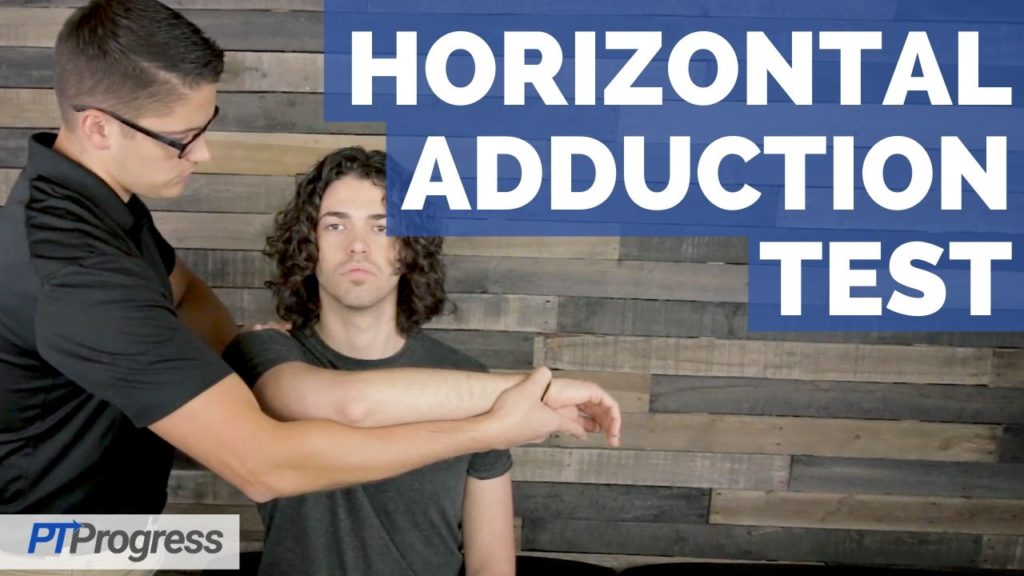
The horizontal adduction test is used to identify subacromial impingement or possible AC joint pathology.
How to Perform Horizontal Adduction Test
Position of Patient: Patient is sitting or standing with arm relaxed at side.
Performance: The examiner will stabilize the scapula posteriorly and passively lift the patient’s arm to 90 degrees of shoulder flexion and 90 degrees elbow flexion. Bring the patient’s arm into horizontal adduction.
How to Interpret Horizontal Adduction Test
Positive Finding: The test is considered positive if the patient experiences pain with maneuver. A positive test may support pathology at the AC joint or subacromial impingement.
Test Accuracy / Reliability / Evidence:
Horizontal Adduction Test Sensitivity and Specificity
Sensitivity = 0.82
Specificity = 0.28
+LR = 1.4
– LR = 0.64
Source: Calis M, Akgun K, Birtane M, et al: Diagnostic values of clinical diagnostic tests in subacromial impingement syndrome. Ann Rheum Dis 2000; 59: pp. 44-47
The horizontal adduction test is used to identify subacromial impingement or possible AC joint pathology.
To perform the horizontal adduction test, position the patient in sitting or standing with the arm relaxed at their side.
The examiner will stabilize the scapula posteriorly and passively lift the patient’s arm to 90 degrees of shoulder flexion and 90 degrees elbow flexion. Bring the patient’s arm into horizontal adduction to complete the test.
The test is considered positive if the patient experiences pain with maneuver. A positive test may support pathology at the AC joint or suggest subacromial impingement.
For more special test, visit the shoulder special test page.

